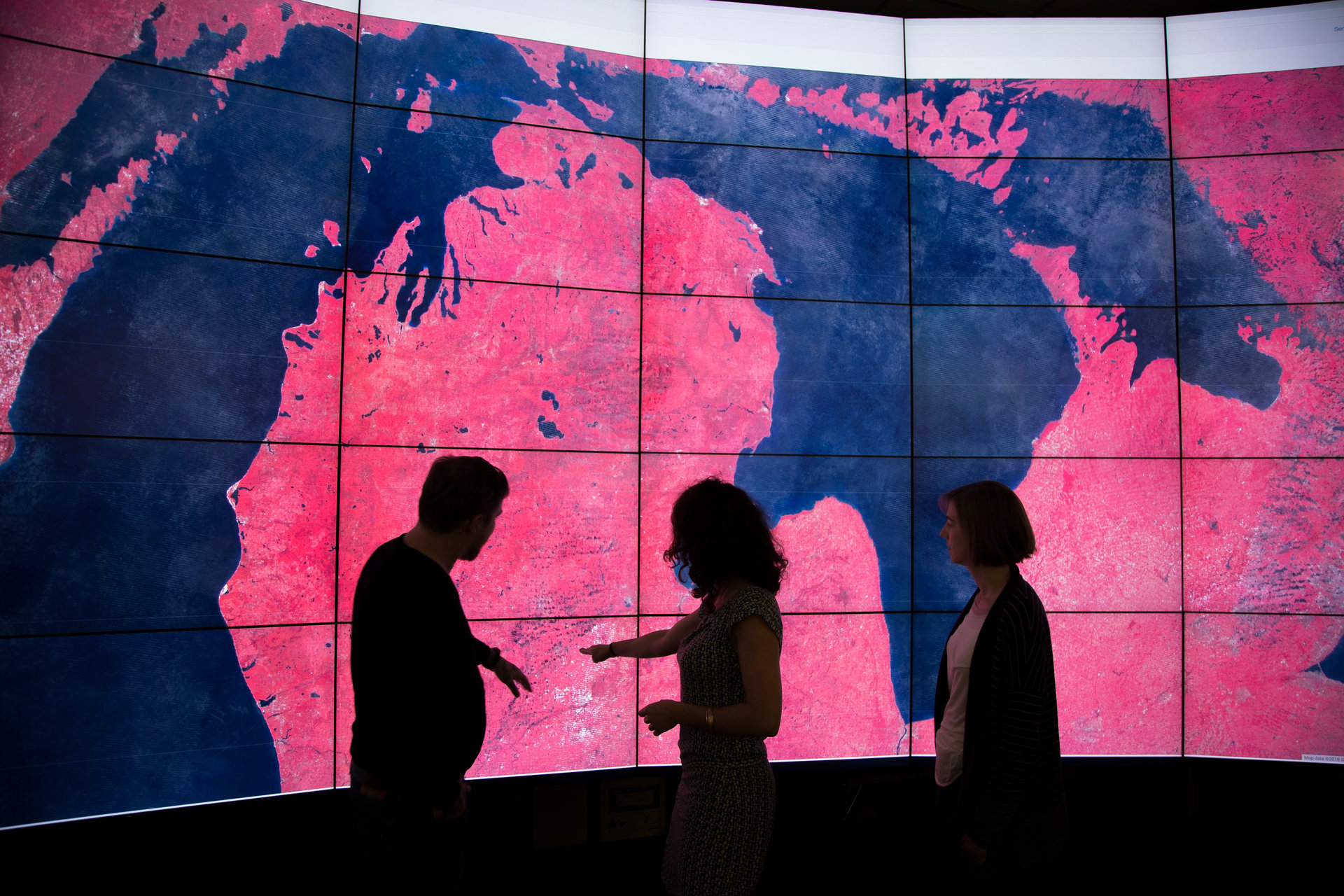Collaborating for climate resilience
The Stanford Doerr School of Sustainability and the Naval Postgraduate School recently convened experts to discuss coastal resilience, water security, and energy security for communities and military installations along the U.S. West Coast.
Imagine the 3,400 miles of California’s shoreline decades from now, when sea levels in some areas may be more than a foot higher than they were in 2000. With careful planning, damage to homes and infrastructure ranging from fuel lines to sewage systems could be mitigated.
But what does careful planning look like if we are going to make coastal communities more resilient to climate-related hazards?
That was one of the questions posed to dozens of oceanographers, engineers, port and harbor authorities, and representatives from utility companies as part of a planning exercise convened by the Stanford Doerr School of Sustainability and the Naval Postgraduate School (NPS) to discuss ways of lessening impacts from climate-driven events on the Pacific Coast in the coming decades.
“We have fundamental research going on, but we also are quite focused on trying to translate knowledge into solutions,” Stanford Doerr School of Sustainability Dean Arun Majumdar said during a press conference about the exercise, which took place April 27-28 at NPS in Monterey, California. “We have to engage local partners, and with Stanford’s Hopkins Marine Station in Pacific Grove, the Naval Postgraduate School in Monterey is a part of our community.”
Hosted by NPS in partnership with the Stanford Doerr School of Sustainability, the event included leaders from the Department of the Navy and participants from the Department of Defense, federal agencies, Congress, think tanks, non-governmental organizations, and the private sector.
Six teams focused on one of three climate-related issues: water security, energy security, or coastal resilience. Together, team members identified the most pressing challenges for their issue area and then explored potential solutions including new policies, technology, business models, and data-sharing practices. They presented their results to a group of leaders including Majumdar, NPS President Vice Admiral (ret.) Ann Rondeau, and Assistant Secretary of the Navy for Energy, Installations, and Environment Meredith Berger.
Preparing for rising seas
Stanford professors Fiorenza Micheli and Jack Baker participated in the coastal resilience team, which discussed sea level rise and related challenges like saltwater intrusion, erosion, and flooding.
“We each had our own challenges and concerns, but also common perspectives,” said Baker, a professor of civil and environmental engineering whose research focuses on quantifying disaster risk and resilience. “In particular, we are all concerned with our technical ability to protect infrastructure near the coast and move people out of harm's way as needed. We also face institutional challenges like obtaining funding, permits to proceed with projects, uncertainty about the cost and performance of new projects. Overcoming those challenges can be as difficult as the technical part of the problem.”

A short drive from NPS, Stanford’s Hopkins Marine Station occupies a rocky headland overlooking Monterey Bay. For Micheli, the David and Lucile Packard Professor of Marine Science whose marine ecology lab is located at the research station, sea level rise is not a distant prospect. The facility’s leadership team is faced with the competing priorities of planning for sea level rise through retreat, new coastal armoring such as seawalls and maintaining existing yet aging infrastructure within a stone’s throw of the sea.
“When identifying needs and obstacles, we also discussed how nearby communities would be impacted by sea level rise,” said Micheli, who co-directs the Center for Ocean Solutions and chairs the school’s Oceans Department. “Do you stay where you are and upgrade your infrastructure, or do you relocate? And what are the implications for the surrounding community? I came away with a sense of mutual learning and insights that can be applied to Hopkins and other coastal labs and communities.”
Additional Doerr School of Sustainability participants included Chief Operating Officer Chuck Litchfield, civil and environmental engineering professor Mark Jacobson, and research oceanographer and civil engineer Justin Rogers.
Building a local-to-global partnership
The two-day discussion, or “tabletop exercise,” focused on these scenarios was organized as part of an academic partnership launched last December between NPS and the Doerr School of Sustainability to deliver solutions at speed and scale, enabling climate-informed, data-driven decision-making by naval and national leaders. Under the agreement, NPS and the Doerr School of Sustainability are establishing new education opportunities, collaborating on applied research efforts, and working together on larger strategic initiatives aimed at addressing climate and energy security issues.
The April tabletop exercise at NPS also included discussions about how to make sure climate change preparations serve communities across the country. “The direction we have received from the President and our nation’s defense leadership is clear – climate action is a national security imperative,” Rondeau said at the press conference, referring to the Department of the Navy’s “Climate Action 2030” strategy. “Our future Navy and Marine Corps warfighters must be prepared to address and account for the effects of climate change in their operational planning. Here at NPS, we are proud to work with the Doerr School of Sustainability to address these challenges and seek out climate solutions that will benefit not only the Department of the Navy, but our nation as a whole.”
Explore More
-
The Stanford Forum on the Science of Energy Transition brought together scientific experts, technology innovators, and industry leaders to explore practical pathways to a decarbonized future.
-
A unique hands-on class teaches Stanford Law School students how to work with early-stage companies that have the potential to move the needle on climate and sustainability.
-
The first group of scholars supported under the new Sustainability Accelerator Fellowship program will focus on the challenge of removing billions of tons of greenhouse gases annually from Earth’s atmosphere by the middle of this century.




